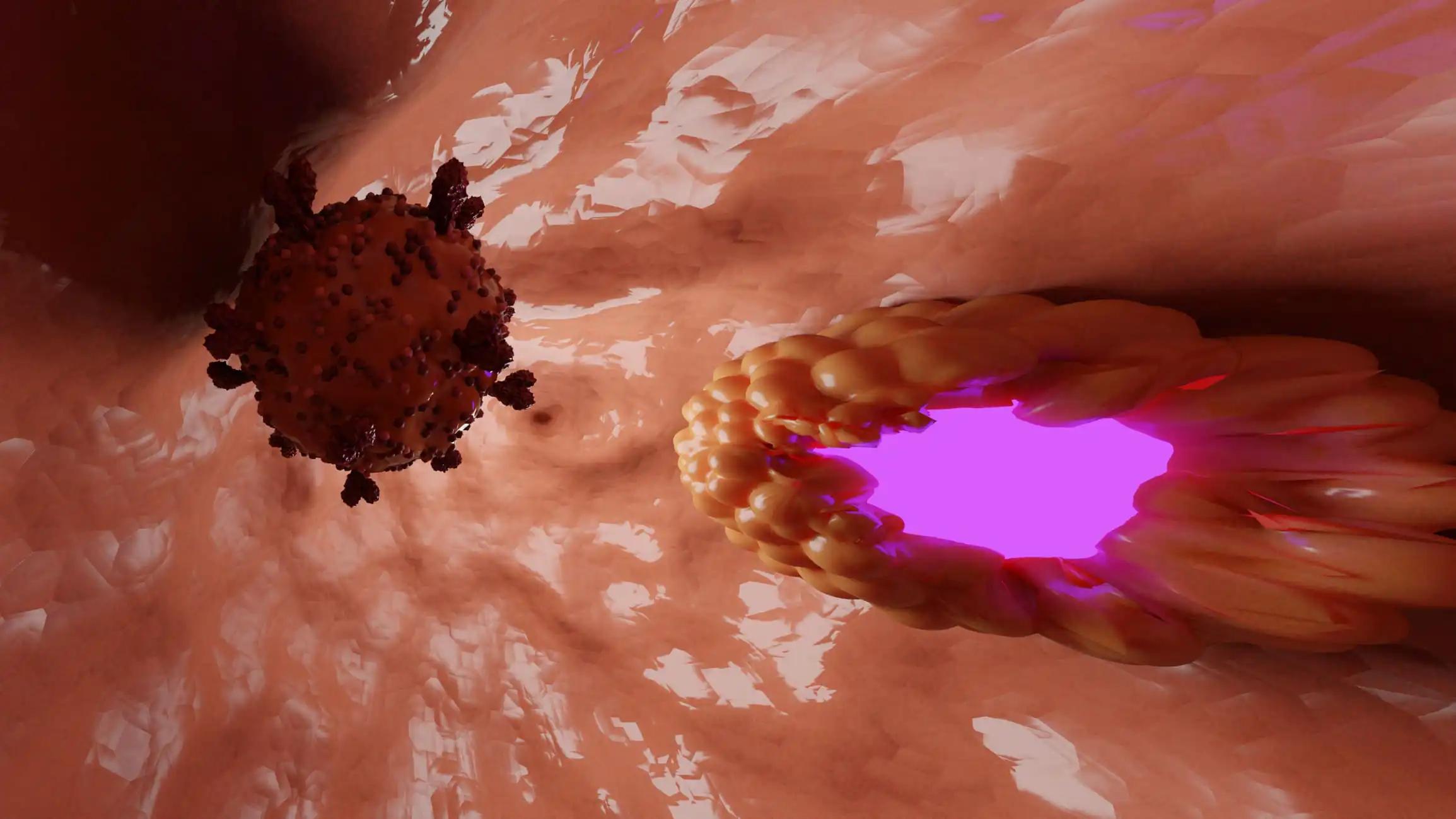KEY TAKEAWAYS
- The Phase 3 ZIRCON study assessed the efficacy of 89Zr-DFO-girentuximab PET/CT in detecting ccRCC in IDRM pts.
- The study showed that 89Zr-DFO-girentuximab PET/CT is safe and effective for identifying and characterizing IDRMs.
The detection of renal masses (RM) poses a significant challenge as current diagnostic tools such as CT, MRI, and biopsy have limitations. It is estimated that around 25% of patients (pts) with RM smaller than 4 cm undergo unnecessary surgery. There is a need for accurate, noninvasive techniques to stratify the risk of RM pts.
To address this issue, Girentuximab, a monoclonal antibody, targets carbonic anhydrase IX (CAIX), which is highly expressed in clear cell renal carcinoma (ccRCC). Radiolabeled 89Zr-DFO-girentuximab can help differentiate between ccRCCs and other renal lesions. The ZIRCON study assessed the efficacy of 89Zr-DFO-girentuximab PET/CT in detecting ccRCC in pts with indeterminate RM (IDRM).
In this clinical trial, pts with an IDRM (≤7 cm; stage cT1) who were scheduled for partial or radical nephrectomy within 90 days of planned 89Zr-DFO-girentuximab dosing were included. The enrolled pts received a single intravenous dose (37 MBq±10%; 10 mg girentuximab) on Day 0 and underwent abdominal PET/CT on Day 5 (±2 d). Blinded central histology review was used to determine ccRCC status.
The primary objectives were to evaluate both the sensitivity and specificity of TLX250-CDx PET/CT imaging in detecting ccRCC in pts with IDRM, using histology as the standard of truth. Key secondary objectives included assessing the sensitivity and specificity of 89Zr-DFO-girentuximab PET/CT in pts with IDRM ≤4cm (cT1a).
Other objectives included assessing safety and tolerability and investigating suspected secondary lesions as per institutional protocols.
In the study, 300 pts participated, with a mean age of 62±12 years and 71% of them being male. Of 288 pts who underwent central histopathology assessment, 67% had ccRCC, while 62% had CT1a masses. The study’s primary analysis included 284 pts. The average sensitivity and specificity across all three readers was 86% [80%, 90%] and 87% [79%, 92%], respectively, for coprimary endpoints. For key secondary, the average sensitivity and specificity were 85% [77%, 91%] and 90% [79%, 95%], respectively.
Of the pts who were ccRCC− on central histopathology, 9 had papillary RCC, while one each had sarcoma and oncocytoma. Renal masses were classified as Bosniak I, II, IIF, III, and IV in 7 (2.5%), 9 (3.2%), 8 (2.8%), 65 (22.9%), and 192 (67.6%) pts, respectively. The study reported 263 adverse events (AEs) in 124 pts, of which two treatment-related AEs of mild intensity were reported.
The use of 89Zr-DFO-girentuximab PET/CT has been found to be well-tolerated and effective in accurately and non-invasively identifying and characterizing IDRMs. This method has shown potential in guiding surgical and treatment decisions.
Source: https://www.auajournals.org/doi/10.1097/JU.0000000000003426.01
Clinical Trial: https://classic.clinicaltrials.gov/ct2/show/NCT03849118
Shuch, Brian; Pantuck, Allan J.; Bernhard, Jean-Christophe; Morris, Michael A.; Master, Viraj; Scott, Andrew; van Praet, Charles; Bailly, Clement; Önal, Bülent; Aksoy, Tamer; Merkx, Robin; Schuster, David M.; Lee, Sze Ting; Pandit-Taskar, Neeta; Fan, Alice C.; Tauchmanova, Libuse; Schmidt, Karl; Vadali, Kavita; Hayward, Colin; Mulders, Peter LBA03-01 89Zr-DFO-GIRENTUXIMAB FOR PET/CT IMAGING OF INDETERMINATE RENAL MASSES–RESULTS FROM PHASE 3 ZIRCON STUDY, Journal of Urology: April 2023 – Volume 209 – Issue Supplement 4 doi: 10.1097/JU.0000000000003426.01



